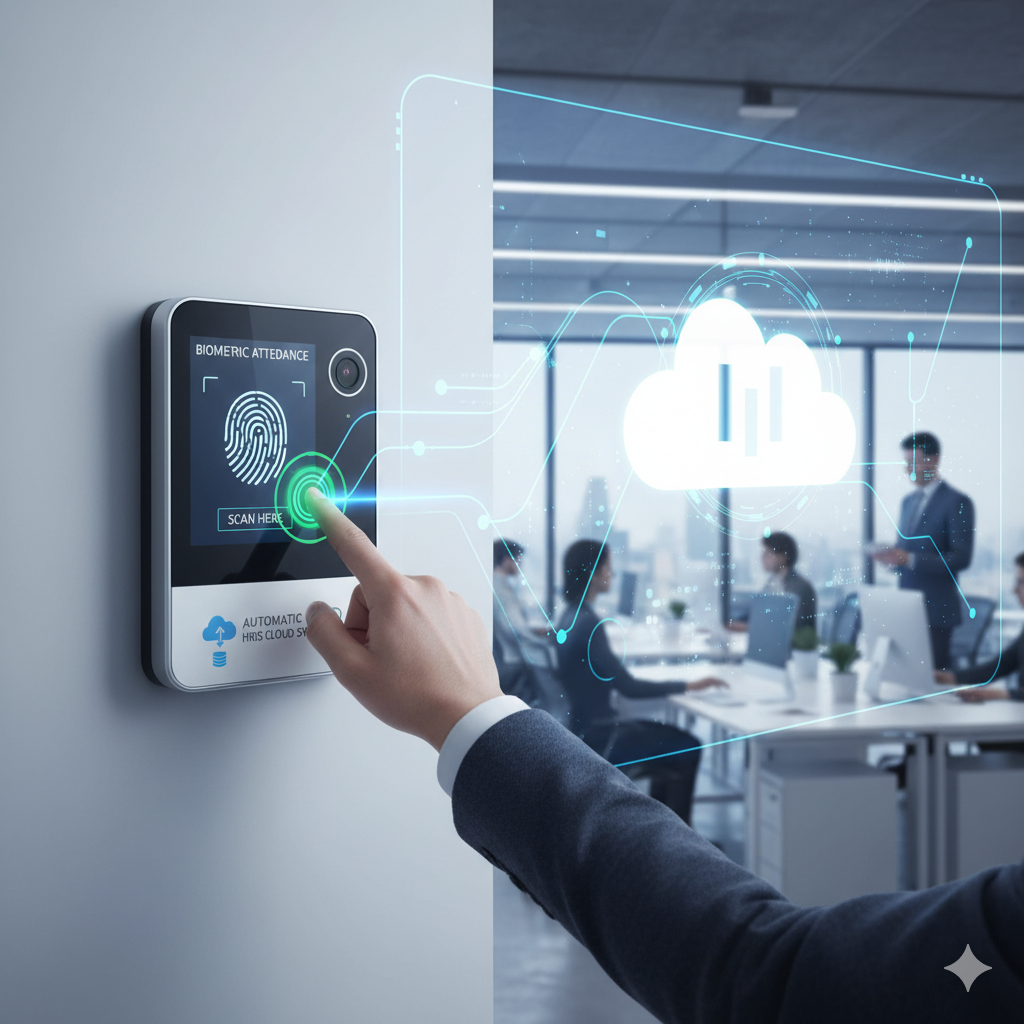Address
Kaypian, San Jose Del Monte City, Bulacan Philippines
Work Hours
Monday to Friday: 8AM - 6PM
Weekend: 10AM - 5PM
Address
Kaypian, San Jose Del Monte City, Bulacan Philippines
Work Hours
Monday to Friday: 8AM - 6PM
Weekend: 10AM - 5PM


Integrated HR. Accurate Payroll.


Integrated HR. Accurate Payroll.

Managing employee attendance has long been one of the most time-consuming tasks in HR. From manual logbooks to outdated punch cards, traditional systems often result in errors, delays, and compliance issues.
Enter the Biometric Attendance System with Automatic HRIS Cloud Sync — a modern, efficient, and secure solution designed to simplify attendance tracking and eliminate manual data entry. By integrating biometrics with Human Resource Information System (HRIS) cloud technology, businesses can now enjoy real-time, error-free, and centralized attendance data anytime, anywhere.
A biometric attendance system uses an employee’s unique physical traits — such as fingerprints or facial recognition — to verify identity. Unlike manual systems or RFID cards, biometrics ensure accuracy, security, and non-repudiation of attendance data.
Each scan is authenticated instantly, ensuring that the right person is clocking in and out. This eliminates “buddy punching” (when one employee clocks in for another) and improves overall workforce transparency.
The magic happens when your biometric device connects directly to the HRIS cloud database.
Here’s how the process works:
This automation ensures HR and management always have accurate, up-to-date attendance records at their fingertips.
Imagine a company with multiple branches. Each location has a biometric scanner that syncs to the HRIS cloud. When employees clock in, their attendance data is immediately reflected in the HR dashboard — accessible to HR staff and managers at the main office.
Payroll staff no longer need to wait for attendance reports or consolidate spreadsheets. Everything is centralized, accurate, and updated in real time.
In today’s hybrid and fast-moving work environments, automation and data accuracy are critical for efficient HR operations. A Biometric Attendance System with HRIS Cloud Sync empowers organizations to:
It’s not just an upgrade — it’s a transformation in how HR manages workforce attendance.
The integration of biometric attendance systems with HRIS cloud technology represents the next step in HR digital transformation. By combining secure biometric verification with real-time cloud data syncing, businesses can achieve accuracy, efficiency, and transparency in their HR processes.
If your organization is ready to embrace modern, data-driven HR management — now is the perfect time to make the switch.